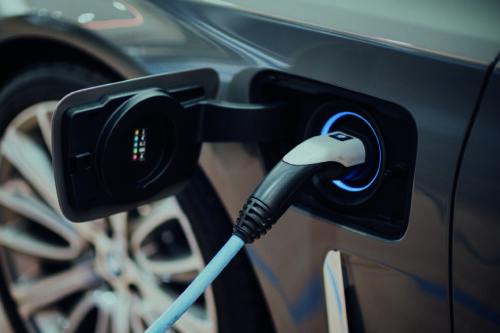Electromechanical relays (EMR), solid state relays (SSR), and reed relays can all be used to electronically switch a high voltage.
EMRs are a popular and trusted technology but—because their contacts are not in a vacuum or inert gas—a large contact gap (and consequently large relay body) is required to achieve a high stand-off voltage.
With SSRs, there are no physical contacts as the switching element is a transistor. However, SSRs have a relatively high leakage current, which can be an issue when used in a leakage detection circuit. Also, SSRs may fail such that there is crossover between the control and switching sides of the device.
Reed relays have very low leakage currents (down to 1nA), very high standoff voltages (up to a few kV) and can be delivered in small packages. Another benefit of reed relays is that the switch contacts (the reeds) are hermetically sealed, so the contamination/oxidation issues that occur with EMRs do not occur with reed relays. Because of their small form factor and high isolation, reed relays are the logical choice for EV testing applications where safety is a priority. Reed relays can also switch AC, whereas semiconductor-based SSRs cannot.
Pickering Electronics has an extensive range of high-performance, high voltage isolation reed relays that are ideally suited for use in current leakage monitoring applications. Furthermore, with device footprints starting at just 46mm2, many relays can be accommodated on a single PCB. The following series are particularly recommended:
Series 67 & 68 reed relays feature switching voltages up to 7.5kV and minimum standoff voltages up to 10kV. Maximum switch current is 3A (at up to 200W) and maximum carry current is up to 5A. Optional electrostatic screening is available.
Series 104 relays have switching voltages up to 1kV and minimum standoff voltages up to 4kV. Maximum switch current is 1A (at up to 25W) and maximum carry current is 1.5A. Optional electrostatic screen is available.
Series 119 devices have switching voltages up to 1kV and minimum standoff voltages of up to 3kV. Maximum switch current is 0.7A (at up to 10W) and maximum carry current is 1.25A.
Series 131 parts are the industry’s smallest HV reed relays. They feature switching voltages up to 1kV and minimum standoff voltages up to 1.5kV. Maximum switch current is 0.7A (at up to 10W) and maximum carry current is 1.25A.
The relays recommended in this article are all instrumentation grade and the reed contacts are plated with either rhodium or ruthenium to ensure a long life (typically up to 5×109 operations). This is necessary because RISO faults can be intermittent, so current leak detection tests should be performed several times a day.
Pickering reed relays are of a former-less coil construction, which increases the coil winding volume, maximizes the magnetic efficiency, and enables for the use of less sensitive reed switches, resulting in optimal switching action and extended lifetimes at operational extremes.
Internal mu-metal magnetic screening enables very dense side-by-side PCB-mounting, saving significant cost and space. SoftCenter technology cushions and protects the reed switch, minimizing internal lifetime stresses and extending the working life and contact stability. Free relay samples are available, and a full customization service is also available with samples available in as little as two weeks.

